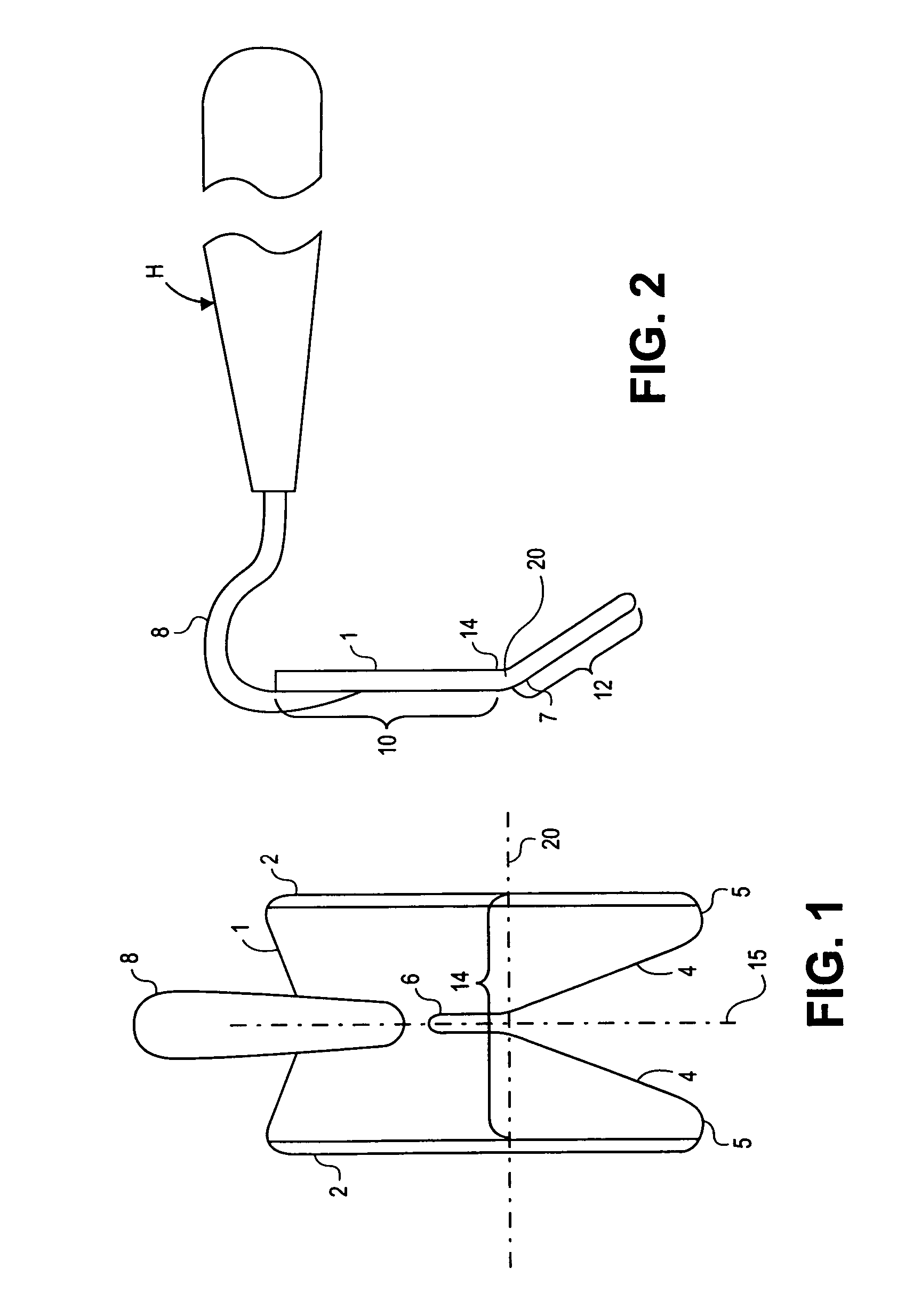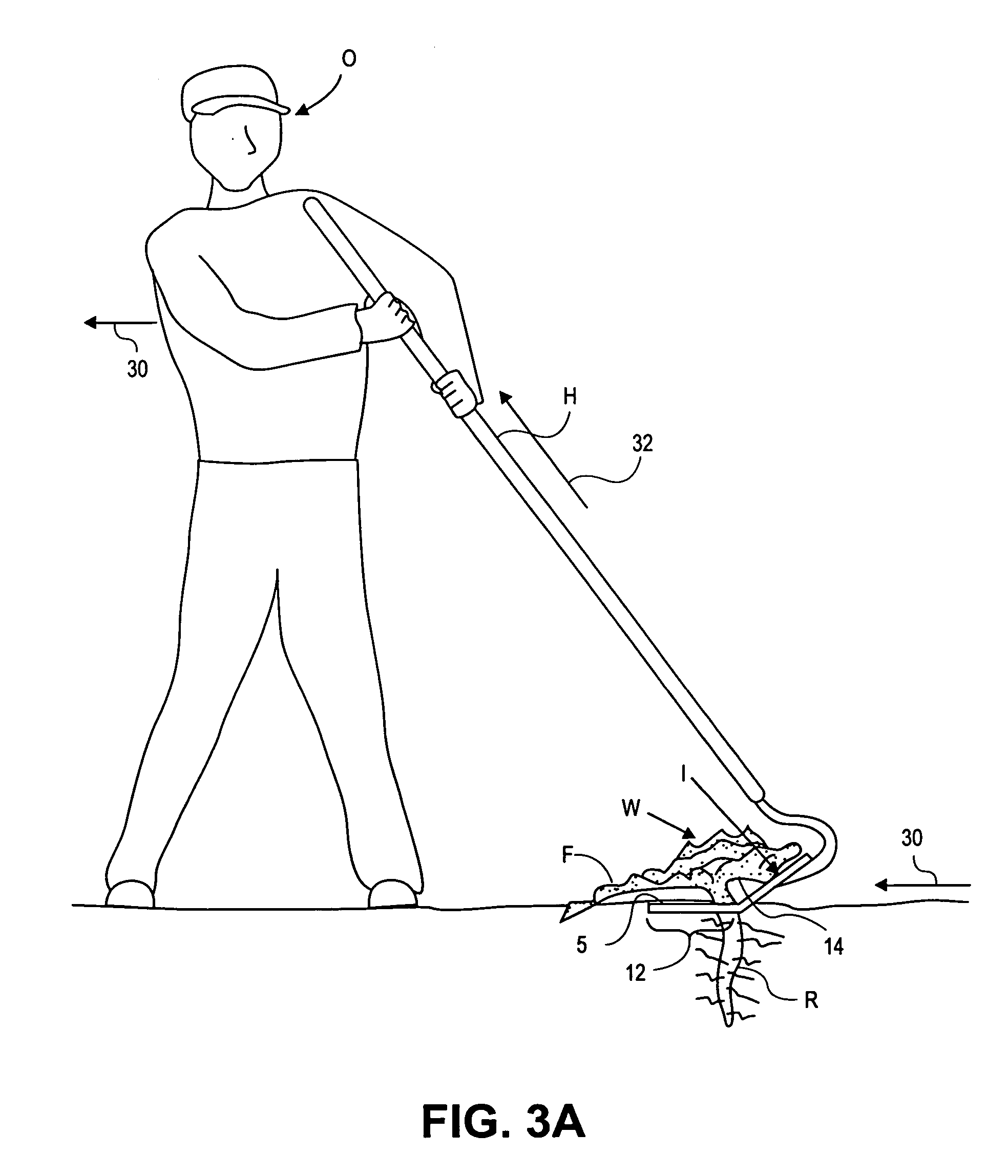Weed puller
a weeding machine and weeding technology, applied in the field of weeding machines, can solve the problems of undisturbed seeds and weed removal with attached roots, and achieve the effects of reducing the effort required for weeding removal, reducing jarring, and reducing the amount of weeds
- Summary
- Abstract
- Description
- Claims
- Application Information
AI Technical Summary
Benefits of technology
Problems solved by technology
Method used
Image
Examples
Embodiment Construction
[0024]Referring to FIGS. 1 and 2, (fore shortened) hoe handle H is shown fastened by shepherd's crook 8 to hoe body 1. As can be seen, hoe body 1 is essentially normal to the elongate handle H. I prefer the shepherd's crook 8 attachment here illustrated at the bottom of hoe body 1. As will hereinafter be set forth, the main ground contact of the hoe occurs along the bottom of the blunted prongs 5; thus the shepherd's crook's attachment at the bottom of the hoe body 1 in no way interferes with the intended operation of the hoe.
[0025]Concentrating on FIG. 1, two blunted prongs 5 extended on either side of hoe body axis 15. These two blunted prongs 5 defined therebetween a V-shaped gathering gap with blunted opposed V-shaped edges 4 on either side of the axis 15. While not required, I prefer that blunted V-shaped edges 4 terminate at a radiused notch 6. Indeed, close observation of radiused notch 6 will observe that the edges leading to radiused notch 6 are themselves very slightly tap...
PUM
 Login to View More
Login to View More Abstract
Description
Claims
Application Information
 Login to View More
Login to View More - R&D
- Intellectual Property
- Life Sciences
- Materials
- Tech Scout
- Unparalleled Data Quality
- Higher Quality Content
- 60% Fewer Hallucinations
Browse by: Latest US Patents, China's latest patents, Technical Efficacy Thesaurus, Application Domain, Technology Topic, Popular Technical Reports.
© 2025 PatSnap. All rights reserved.Legal|Privacy policy|Modern Slavery Act Transparency Statement|Sitemap|About US| Contact US: help@patsnap.com



